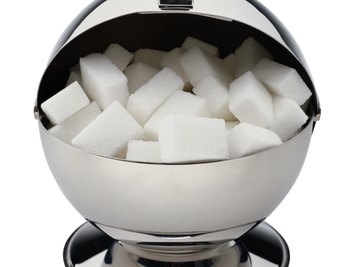
Glycolysis is the 10-step metabolic respiration of the sugar glucose. The purpose of glycolysis is to yield chemical energy for use by a cell. Scientists consider glycolysis an ancient respiration pathway because it can occur in the absence of oxygen, which is how it could allow the survival of primitive anaerobic bacteria that predated Earth’s oxygen atmosphere.
Glycolysis requires specific ingredients to work. The inputs of glycolysis include a living cell, enzymes, glucose and the energy transfer molecules nicotinamide adenine dinucleotide (NAD+) and adenosine triphosphate (ATP).
Read more about what Glycolysis is.
What Is the Purpose of Glycolysis?
Glycolysis is used and present in almost every living organism on Earth. It's believed that this is one of the first metabolic pathways to arise on earth since it doesn't require oxygen, which wasn't readily available in the early atmosphere.
Glycolysis is the first step in many organism's metabolic pathways that takes sugar and turns it into usable cellular energy. Using a combination of all of the inputs of glycolysis, this process turns one 6-carbon sugar into 2 pyruvate, 2 ATP, and 2 NADH molecules, all of which are then used in further metabolic pathways like the Kreb's cycle, fermentation, oxidative phosphorylation, and/or cellular respiration.
Read more about the end result of glycolysis.
Six-Carbon Sugar
The basic input for glycolysis is sugar. Normally the sugar used is glucose, but enzymes can convert other six-carbon sugars, such as galactose and fructose, into intermediate substances that enter the glycolysis pathway downstream of the starting point for glucose.
Plants and other autotrophs create glucose during photosynthesis using solar energy and carbon dioxide. Heterotrophs must ingest their sugar by eating plants, autotrophs, and other food sources. The sugar is available in a wide variety of foods directly or as starch and cellulose, which break down into glucose. Glucose dissolves in water and, with the help of enzymes, can easily be transported into or out of a cell, depending on its relative concentrations on either side of a cell membrane.
Enzymes
Enzymes are proteins that act as catalysts for biochemical reactions. Enzymes lower the energy needed to drive a reaction without being used up by the process. Glucose transporter enzymes help cells import glucose.
The first enzyme within the glycolysis pathway is hexokinase, which converts glucose to glucose-6-phosphate (G6P). This first step depletes the glucose concentration of the cell, thereby helping additional glucose to diffuse into the cell. The G6P product doesn't readily diffuse out of the cell, so hexokinase in effect locks up a glucose molecule for use by the cell. Nine other enzymes participate in glycolysis with one used in each step of the process.
ATP
ATP is a coenzyme that stores, transports, and releases chemical energy within cells. An ATP molecule contains three phosphate groups, each held by a high-energy bond. ATP yields chemical energy when enzymes remove one or more phosphate groups. In the reverse reaction, enzymes use energy when adding phosphates to precursors, resulting in the production of ATP.
Glycolysis requires two ATP molecules to get underway, but produces four ATPs by the last step, giving a net yield of two ATPs.
NAD+
NAD+ is an oxidizing coenzyme that accepts electrons and protons from other molecules, creating the reduced form NADH. In the reverse reaction, NADH acts as a reducing agent that donates electrons and protons when it’s oxidized back into NAD+. NAD+ and NADH are used in a variety of biochemical pathways, including glycolysis, that require an oxidizing or reducing agent.
Glycolysis requires two molecules of NAD+ per glucose molecule, producing two NADHs as well as two hydrogen ions and two molecules of water. The end product of glycolysis is pyruvate, which the cell can further metabolize to yield a large amount of additional energy.
References
About the Author
Based in Greenville SC, Eric Bank has been writing business-related articles since 1985. He holds an M.B.A. from New York University and an M.S. in finance from DePaul University. You can see samples of his work at ericbank.com.
Photo Credits
Ryan McVay/Photodisc/Getty Images
